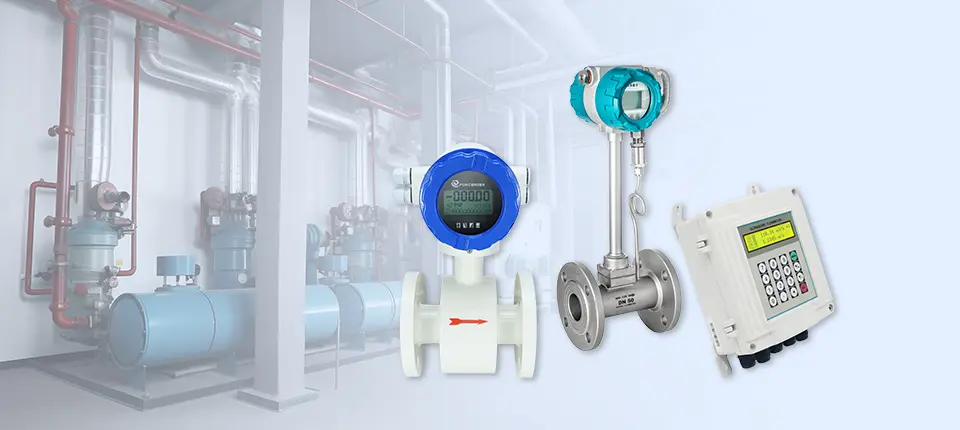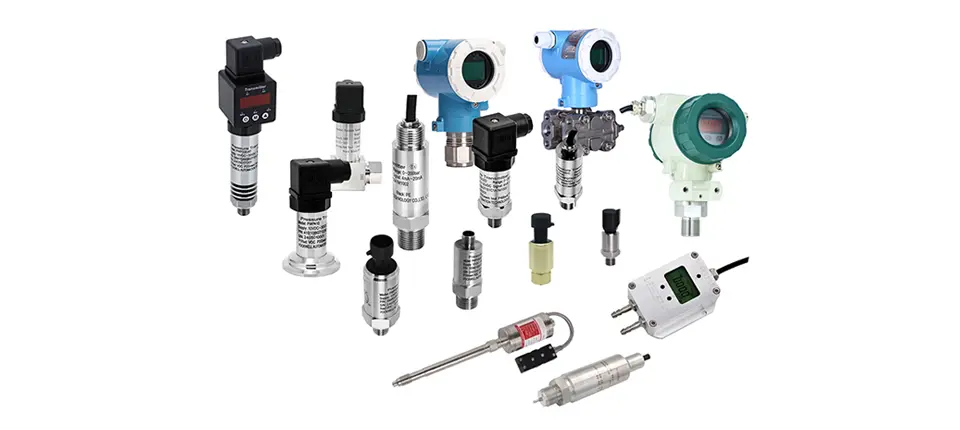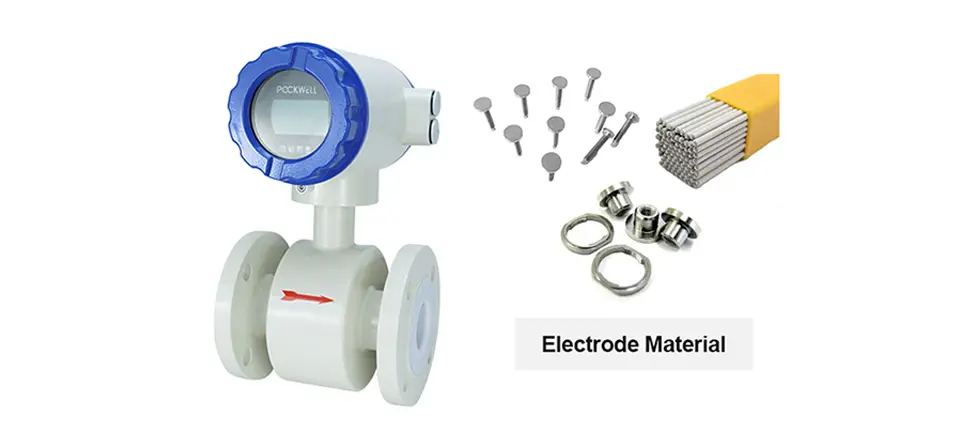Whatsapp: +86 181 7515 5326
7 Main Flow Meter Types
The types of flowmeters are numerous, each with unique characteristics and applicable scenarios. Below are brief introductions to seven main types of flowmeters:
- Electromagnetic Flow Meter
- Designed based on Faraday’s Law of Induction, it is corrosion-resistant, anti-interference, and highly accurate. Magnetic flow meter with high precision is commonly used to measure the volumetric flow rate of conductive liquids in enclosed conduits but is not suitable for measuring steam, gases, or liquids with very low conductivity.
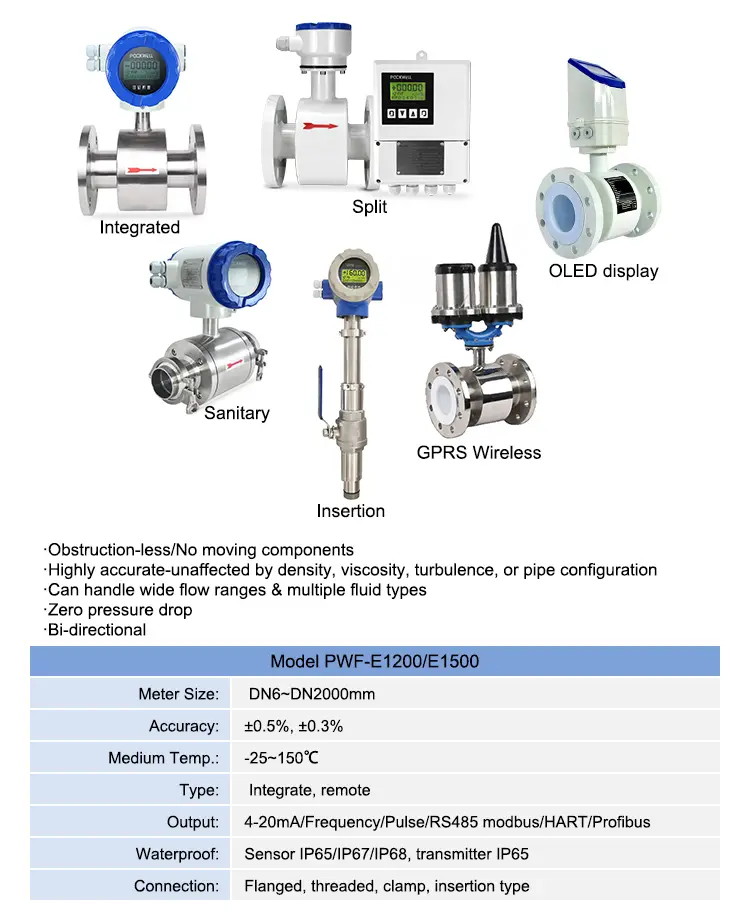
- Ultrasonic Flow Meter
- It employs a non-contact measurement method, calculating flow rate through the speed and time difference of ultrasonic waves propagating in the fluid. Suitable for multiple fluid media, including gases, liquids, and steam, it is easy to install and has no requirements for fluid physical properties, providing high accuracy and stability.
- Clamp on ultrasonic flow meter with display is widely used in tap water, heating, water conservancy, metallurgy, chemical industry, machinery, energy and other industries. It can be used for production monitoring, water balance debugging, heat network balance debugging, and energy-saving monitoring.
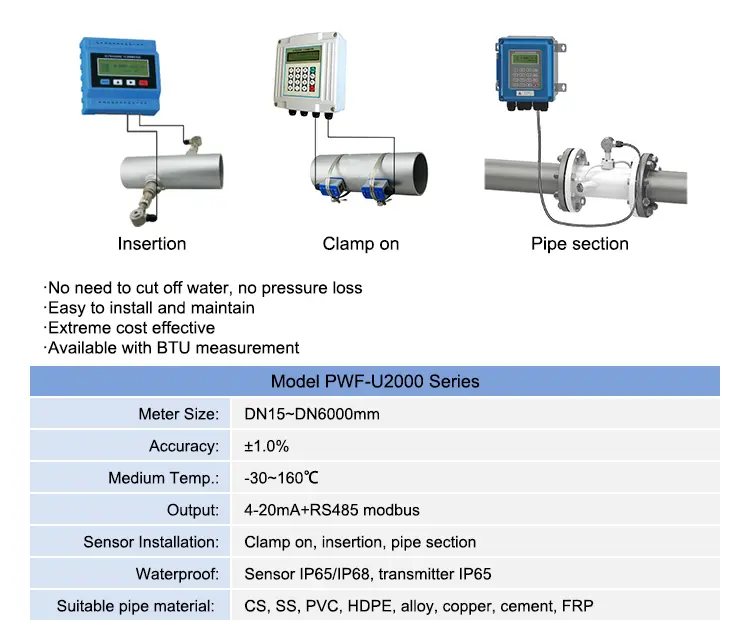
- Liquid Turbine Flow Meter
- As a precision flow measurement instrument, it boasts high accuracy, good repeatability, compact structure, and lightness. Digital turbine flow meter with RS485 is widely used in metering and control systems in fields such as petroleum, chemicals, and metallurgy, particularly suitable for measuring liquid flow rate and total volume.
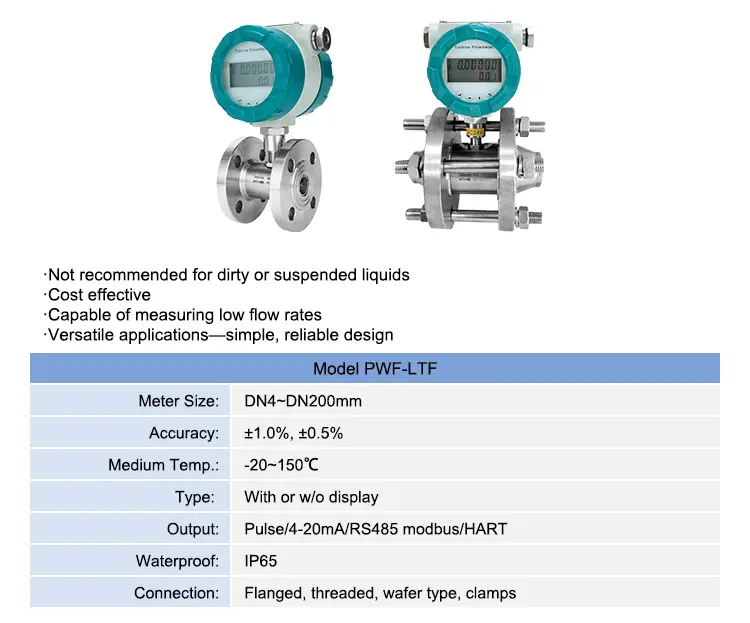
- Gas Vortex Flow Meter
- Designed based on the Karman Vortex Street principle, it measures the volumetric flow rate of gases, steam, and liquids. Digital air gas flow meter with display features a wide measurement range, high accuracy, low pressure loss, and high reliability. It’s widely used in petroleum, chemical, electric power, light industry, power heating and other industries.
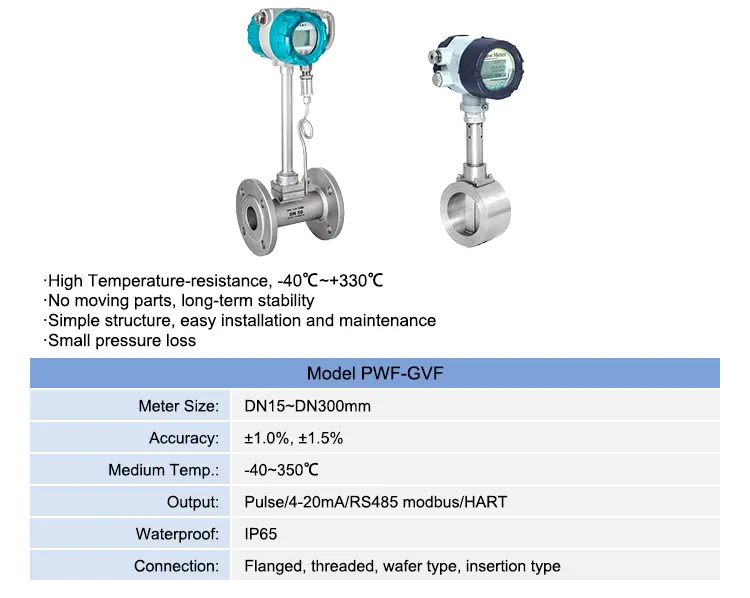
- Mass Flow Meter
- Based on the Coriolis force, it directly measures the mass flow rate of the medium passing through the flowmeter. It can also measure the density of the medium and indirectly measure the temperature. It is characterized by high measurement accuracy, no straight pipe section requirements, and good reliability, especially suitable for situations requiring precise measurement of fluid mass, and batching coriolis mass flowmeter precise filling.
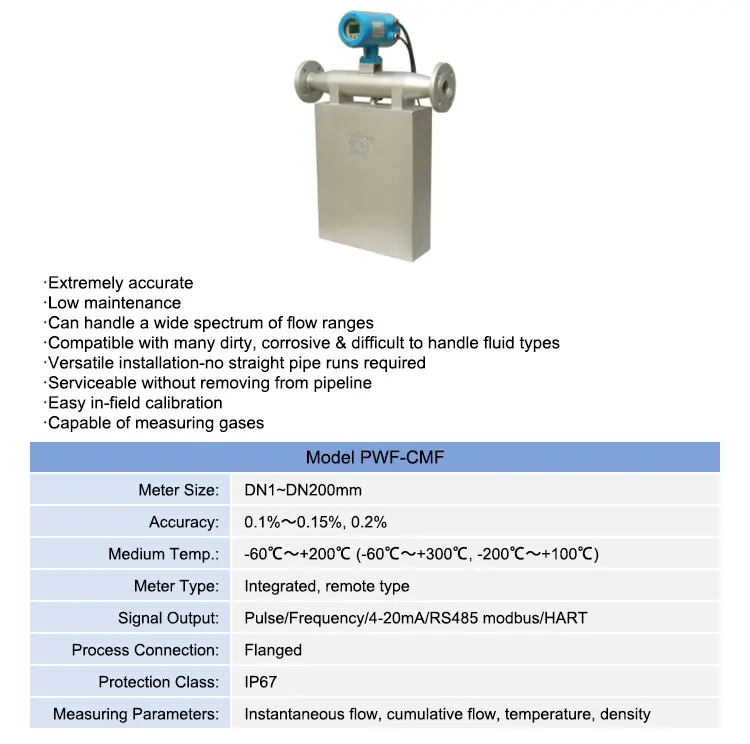
- Ultrasonic Open Channel Flow Meter
- It is mainly used to measure water flow in open channels by measuring the water level and flow velocity in the channel. It is applicable to flow monitoring in fields such as water conservancy and environmental protection.
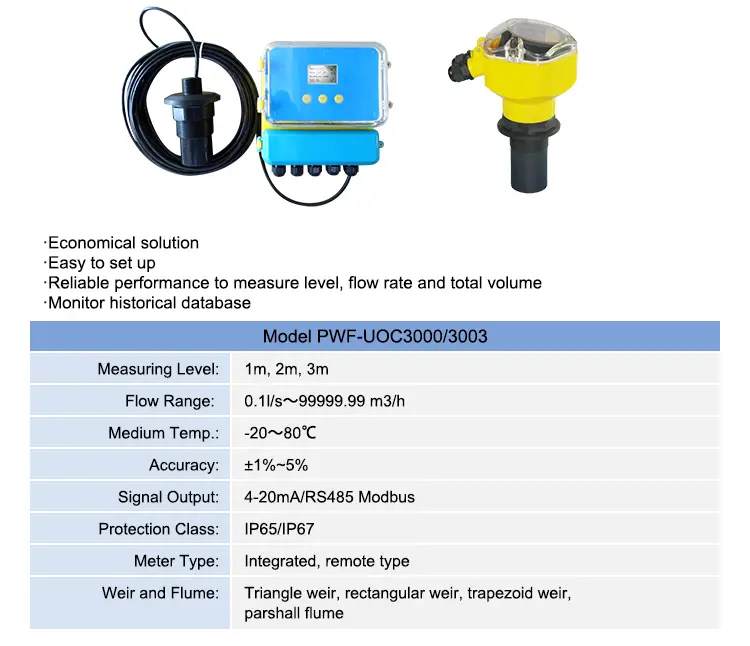
- Radar Flow Meter
- It uses radar waves to measure fluid flow velocity and flow rate. It features non-contact measurement, a wide measurement range, and easy installation and maintenance. It is suitable for flow measurement in various complex environments, such as water management and environmental monitoring.
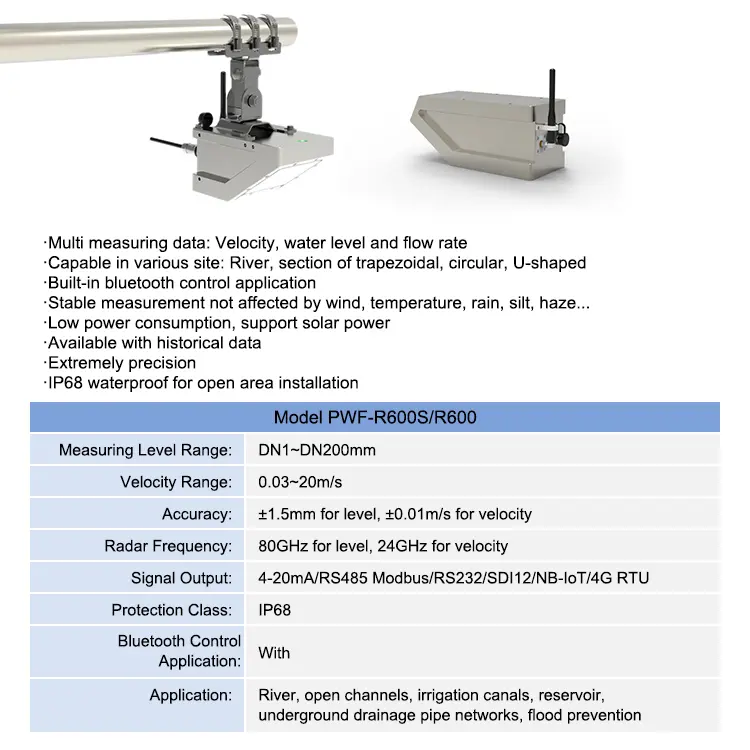
In summary, different types of flowmeters have their unique characteristics and applicable scenarios. When selecting a flowmeter, it is necessary to comprehensively consider factors such as actual measurement requirements, fluid characteristics, and environmental conditions to ensure that the selected flowmeter meets the precision and stability requirements of the actual measurement.
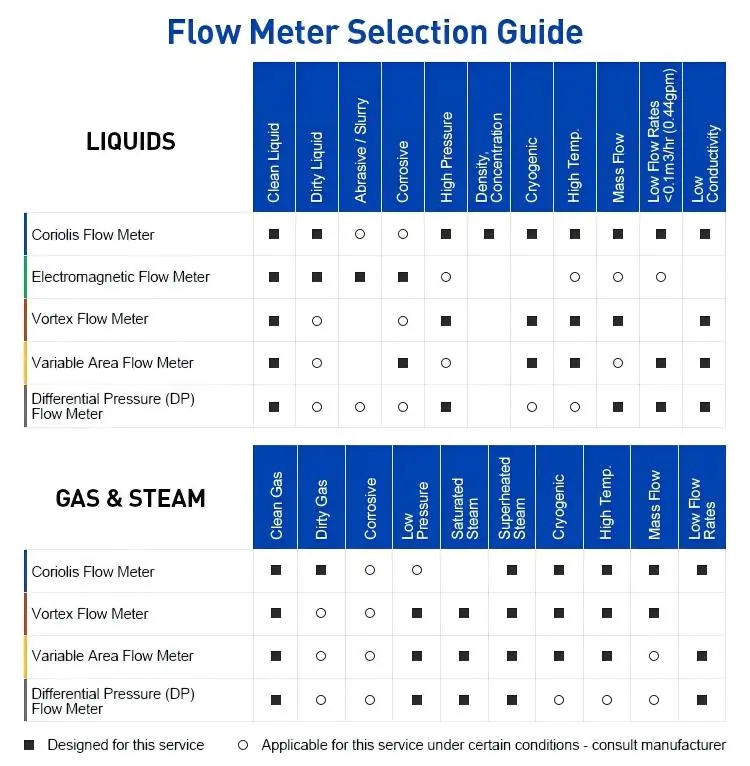
Keywords:
Sales contact
Pokcenser Automation Technology Co., Ltd
Mobile: +86 181 7515 5326
Email: info@pokcenser.com
Tel: +86-731-8229 9492

